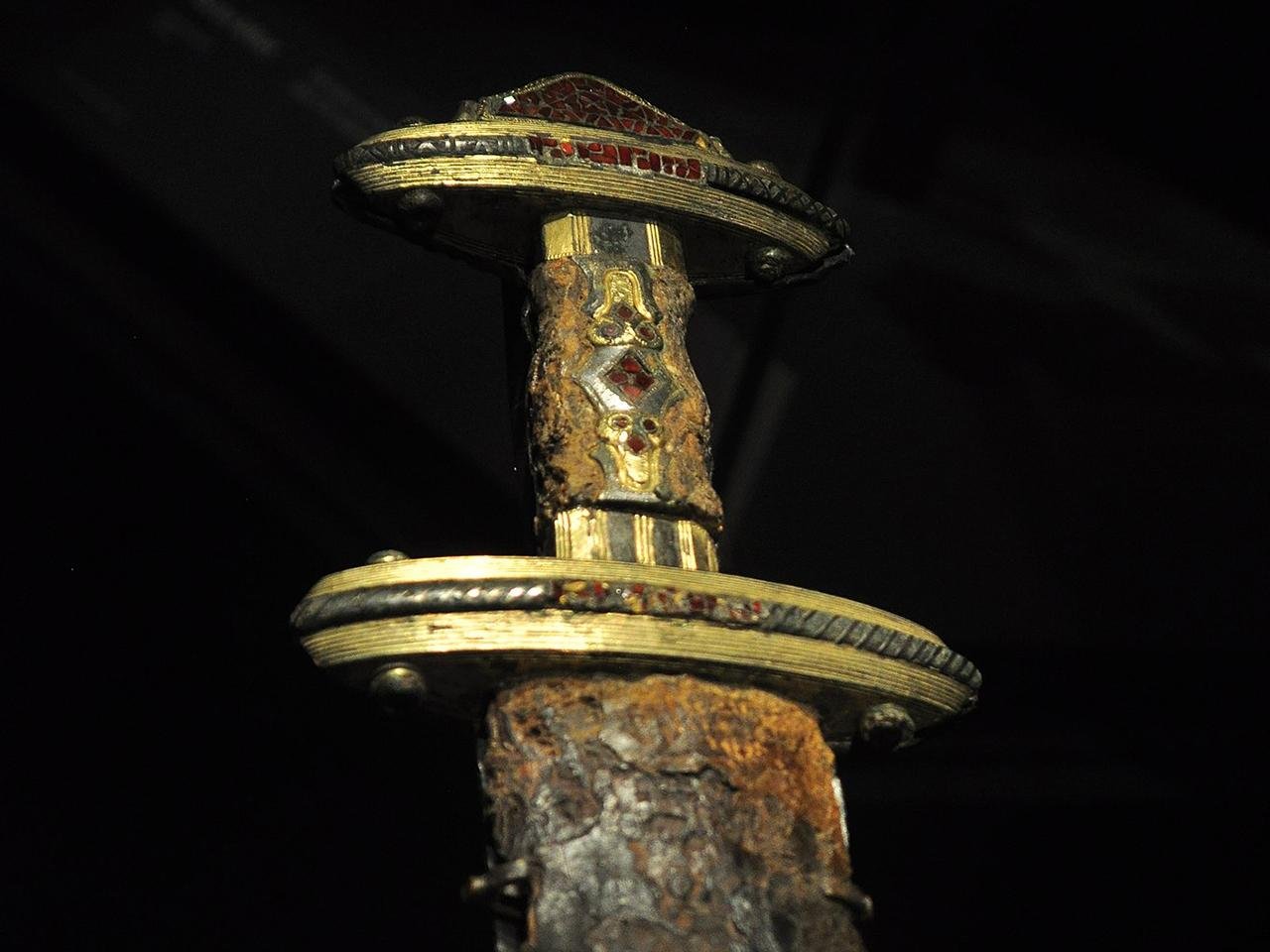A Viking-era sword, dating back to the 9th or 10th century, has been unveiled by the Military Museum in Białystok, Poland. Found by museum employee Szczepan Skibicki during a dive in the Supraśl River in 2022, this rare artifact is among only a handful of similar swords discovered in the country.
 Hilt of a Viking sword and extreme upper portion of scabbard, 7th century. Credit: Joe Mabel, CC BY-SA 4.0
Hilt of a Viking sword and extreme upper portion of scabbard, 7th century. Credit: Joe Mabel, CC BY-SA 4.0
Skibicki stumbled upon the sword in a bend of the river where erosion had exposed a sand deposit. “It was Sunday, around 5 p.m., when I swam in the Supraśl River,” Skibicki shared in a Facebook post from the museum. “At about 120 cm deep, I spotted an interesting object, which turned out to be a sword! Thanks to my education and work, I knew how to secure it and notify the proper authorities.” He likened the discovery to winning the lottery, reflecting on the extraordinary luck involved in unearthing such a treasure.
Experts believe the sword was forged in the late 9th or early 10th century, potentially linked to Viking or Baltic cultures. While Poland was not a central arena for Viking activity, archaeological evidence confirms their presence at trading and administrative centers during this period. The weapon’s design, marked by its distinctive hilt, aligns with Viking craftsmanship but also hints at possible influences from Baltic communities.
Dr. Ryszard Kazimierczak of Nicolaus Copernicus University in Toruń highlighted the sword’s rarity and cultural significance: “The sword is unique due to its form, shape, and the degree of preservation of organic material visible on the hilt. This is incredibly rare for artifacts of this age.”
The blade itself tells a story of conflict, bearing micro-cracks, scratches, and splinters likely resulting from combat. “The middle part shows how time and use have acted upon it,” explained Robert Sadowski, director of the Military Museum. “When these swords were used in battle, the middle part absorbed the most blows, leading to the wear and tear visible today.”
Following its recovery, the sword underwent a rigorous legal process overseen by the Provincial Conservator of Monuments to formally transfer ownership to the museum. It was then sent to Nicolaus Copernicus University for restoration, where specialists carefully removed mineralized layers and preserved the sword in a controlled wet environment to prevent damage from drying out.
The restoration process, which took about five months, was meticulous. “We had to ensure the original structure and organic elements were preserved,” Dr. Kazimierczak stated. The sword’s exceptional condition, including preserved organic material on the hilt, makes it a standout artifact in Poland’s collection.
Historians speculate that the sword may have been lost during a river crossing or in a skirmish, possibly resulting in the death of its owner. Its presence in the Supraśl River adds to the intrigue of the region, which yielded another medieval sword during drainage works in the 1970s. The earlier find, dated to the 11th century, shares similarities with the recent discovery.
More information: Nauka w Polsce





